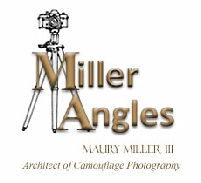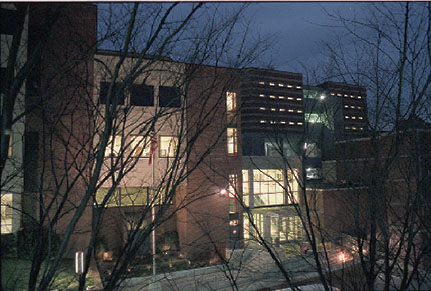
Photography
Writing • Design
Maury & Susan Miller
All Rights Reserved.
All images and material
© 2004-2021


Architectural
In the April 2011, issue of Architect - The Magazine of The American Institute of Architects, Elizabeth Kubany, a publicist for architects & designers, states in an interview:
Many firms have their favorite photographers, the ones with whom they feel most comfortable. It’s a seductive idea to stay with a trusted photographer. But “try to stay open to new names,” Kubany says. New talent does not necessarily mean inexperienced photography. A generalist photographer with an eye for architecture might make for a great discovery — like Alfred Stieglitz, who took the iconic 1903 photograph of the Flatiron Building. Always check an architectural photographer’s portfolio for shots of a variety of building types that show something special. “You don’t want a sense of sameness,” she says.
Don’t forget point of view . . . “There has been a recent shift away from photographs with a chilly modernist perfection to a more inclusive, less tidy perspective,” Kubany says. Idealized pictures of empty buildings are “losing their vogue, while shots with a point of view are in. If the purpose of architectural photography is to get a building noticed — by potential clients, by editors, by the general public — then it follows that having images with a strong point of view is a great idea.”
Or to put Kubany’s sentiments into one of Miller Angles’ mottoes:
“Get REAL . . . Not SURREAL!”
Designers and architects design to induce or portray a certain mood. Colors, shapes, and spatial arrangements are carefully planned to invoke the moods or “states of mind” they hope to create. Maury Miller understands this aspect of design, the “heart and soul” of design and captures this “heart and soul” on the photos he shoots. The photos have feeling because he knows the places have feeling of their own — and each one is different.
Maury Miller is drawn to the architectural perspective that each and every particular structure has to offer. He figures out how the structure ties into the landscape and then tries to learn the decoction of the structure. He translates this to a photographic slate. One will come closer to shaping a photograph this way than any other method. Everyone has their own methodology in photographing buildings and places, and Miller Angles brings a little something different to the table.
Maury Miller still shoots film because there is an authenticity of color in film that one cannot record via digital. That is the very reason he is still dropping a needle on a 33-1/3 vinyl record. There is a more pure sound to the music, and — there is a more pure color to the photo. (Not to mention . . . negatives don’t vanish into cyberspace!)
Now if shooting film sounds old-fashioned and backward to you, remember — whether reviewing film shots or digital shots, it all takes time ! And whether a photographer shoots film or digital, only the best shots will be cataloged, proofed, and printed to present to the client. And it takes time to “tweak” digital shots after they’ve been selected from the shots made. Miller Angles will digitally scan shots the client selects from shots made. Feared problem solved !
The photographers at Miller Angles know that the broader and more diffused the light falling on the particular structure, the softer the shadows. Architectural photographers at Miller Angles understand the effect of sunlight on a scene and attentively study the quality of available light before they shoot.
Several architectural photographers believe in shooting structures in evening light to bring out high drama, but making photographs in evening light brings on a number of compromises.
• Seldom are available light sources at evening all of the same color.
• One has to decide how to record the building with a minimum of filtration, then letting the other sources of illumination fall where they may.
• “Hot light” and/or varied colors of street lamps can bring to the photograph a distasteful form of light which will degrade the particular photograph.
Instead of “evening” or “night” shots, Miller Angles prefers “dusk” shots. The light at dusk is semi-darkness — the darker part of twilight just before the sun goes down for the day. The light at “dusk” is more pleasing and even. Miller Angles will shoot “evening” shots if the situation calls for it, but that is the qualifying factor — does the situation call for it? Or does the slogan or focus of the business lend itself more to an “evening” shot rather than a “day” shot? The focus of the shot should help reflect the focus of the business if applicable.
One observation of totally digitally produced architectural photographs is that the light in every photo appears to be the same quality and color! That is not the way light appears in reality, nor is it the way electrical engineers design and specify lighting when engineering the lighting of a structure. Different areas are engineered to render different light ambiances. These different light ambiances are planned according to the proposed use of the various areas and to accommodate the comfort and appeal of the users. ALL LIGHT IS NOT ENGINEERED FOR THE SAME USE, NOT ENGINEERED FOR THE SAME AMBIANCE, AND SHOULD NOT BE SHOWN OR BE EXPECTED TO BE SHOWN AS EQUAL THROUGHOUT A STRUCTURE ! EVERY STRUCTURE AND EVERY PLACE HAS ITS OWN FEELING, AND THIS NEEDS TO BE COMMUNICATED.
Many times in architectural photography, obstructions present themselves around the structure to be photographed. Lampposts, cables, power poles, and wires are all distracting elements surrounding structures. They may not be readily noticed by the naked eye. But the camera will ALWAYS see them and emphasize them — unless one has a careful photographer composing the shot.
Maury’s special style employs Camouflage Photography — a style of photography he created and perfected himself.
What is Camouflage Photography? Skilled photography that consciously pinpoints and obscures unsightly intrusions within a photograph to make them disappear, be less noticeable and not distracting in the photo.
A good professional architectural/location photographer will purposefully obscure unsightly intrusions in the photograph making them seem to disappear, eliminating the distraction they create.
When Miller Angles photographer Maury Miller makes a photograph, his keen sense of observation always considers unsightly obstructions when he is COMPOSING the photograph. His carefully composed photographs hide unwanted poles, cables, and other unsightly annoyances. This careful composition saves time and money that would be spent at the computer later manipulating the photos. Several photographers shooting digitally let the ugly obstructions fall where they may. They later get back to the office and use a computer to remove the obstructions, charging somewhere between $125 - $250 per hour for this extra computer manipulation of the photos. Remember — whatever one erases, one has to replace — more time and more money spent. Those who make no effort to obscure obstructions when making photographs and who rely totally on the computer to remove unwanted vexations are considered weak photographers.
Choose Maury Miller to make your architectural photographs because he:
• Has a real feel for structures
• Creates high quality images on site
• Promotes the natural built environment that gives the structure its unique sense of place
• Believes in natural corners and keeps vertical lines perpendicular to the base
• Provides a coherent visual theme for each photograph
• Simplifies the photograph by keeping the perspective as logical and correct as possible
• Is CONSERVATIVELY PRICED ! ! !
Location & Event Photography
Miller Angles will photograph your property development, structure, specific locale, or event. Each subject matter or event photographed will have its own expression.
When it comes to making great location photographic shots, Maury is one of the best. To make a great location photograph, Maury:
• Becomes familiar with the setting before photographing
• Captures and exhibits the emotions and spirit of the places and things photographed
• Attunes himself to the nuance of a place and its overall setting
Product Photography
Got products or services you need photographed? Maury Miller:
• Works with commercial clients to determine the best way to feature products or services
• Pays close attention to client needs and gets the job done in a timely manner
Remember — Miller Angles:
• Photographs at reasonable cost
• Strives toward customer satisfaction
• Does custom photography for all your business needs
• Provides stock photography
• Offers exclusive Serene Scenes that inspire — serenity!
| Photography |
| Writing |
| Design |
| Camouflage Photography Illustrations |
| Design Illustrations |